There’s a lot to learn to be able to pass the assessment and gain your level 2 gym instructor qualification.
Just because there’s a lot to learn, does that mean it is difficult or even hard to pass the level 2 fitness instructor course?
No, and in this article, I will be breaking down each module of the course and explaining how “hard” each of them is to study and pass.
I’ll then be giving you a complete breakdown of the level 2 gym instructor course and tell you everything you need to know in order to pass it with flying colors.
Sound good?
Let’s go…

| Related articles |
| Passing The Gym Instructor Assessment: 15 Super Actionable Tips |
| Becoming A Fitness Trainer: How Long Does It Take? |
| How To Get A Job At A Gym With No Experience – Step By Step |
Passing the level 2 gym instructor qualification is not difficult. You will be given full access to the information you require and plenty of time to study them. The practical exams are simple as long as you remain calm and remember what you have learned during the courses you have taken.
Right off the bat, I can put you at ease by saying that passing your level 2 exams to gain your gym instructor certification is not hard, at all.
Don’t get me wrong, you won’t be able to ignore all the materials you are sent by your course provider, turn up to the exam and blag your way through, it will take some study, but the actual work itself isn’t hard.
What does the level 2 course include?
Providers will all list different wordings and descriptions for the modules they cover in their level 2 qualification, but they all end up teaching you roughly the same topics.
The modules listed below are “clickable” so if you’d like to jump to one in particular, just give it a little click and it’ll jump right to the one you’re after.
Your level 2 course will include:
So let’s start breaking down each of these modules and I’ll explain exactly what they will entail and how hard they are to study and how tough the exams are to pass.
If you’d like to skip right ahead to the examination breakdown, please click the link below.
The level 2 gym instructor practical examination and how to pass
Anatomy and physiology
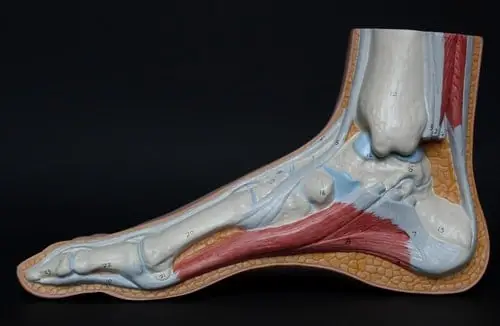
As you can probably tell, this module is where you will learn all about the body, the skeleton, its muscles, ligaments, and muscles. You will learn what exercises work for each individual muscle group, and how muscles, tendons, ligaments, and bones work together to facilitate certain movements within the body.
If you have a background in science or biology, a lot of these concepts will seem pretty basic to you, and even if you have no prior knowledge, the way the course is broken down will have been designed so that the information is easy to learn for just about anyone.
You’ll be given a booklet that will have diagrams and explanations of the different types of joints and how they work, the names of all the bones that make up a skeleton, and an explanation of each muscle’s name and function.
Some courses will enhance your learning of these concepts with either 1-2-1 tuition or online courses that may include videos that can help some people learn faster.
How hard is this module?
Of all the modules, I feel that this is the most likely to cause some people to struggle a little.
This is mainly because there is a lot of theory involved and you will need to memorize a lot of the information in order to pass your exam.
For a lot of people, it will take a good few hours of reading each evening in order to learn the information required to make you feel fully comfortable going into the exam as you will have a separate exam from the practical exams later on.
Don’t let this put you off though, as long as you put the hours in it is no harder to learn than basic anatomy that you would get in middle school, pretty much everyone can learn this stuff and you will have plenty of time in the exam to answer all your questions.
For a quick idea of the information, you will be learning, click the link below
Musculoskeletal System: Normal Structure & Function
The physiology and Anatomy exam
You will usually be given at least an hour to complete your written exam with extra time given if required. People were given extra time for my examination, so I imagine that a lot of other course providers would offer the same.
It’s unlikely, but if you do fail the physiology and anatomy exam, you will be able to re-sit it again.
Remember, the course providers want all their trainees to pass the course they have taken, so they want you to pass just as much as you do!
Program design

After being taught how the muscles of the bodywork, you will learn how to design an exercise program around your clients’ goals.
You will learn about contraindications (exercises that could cause harm) and health concerns that would influence the design of your program.
You need to assess your client for any injuries, or postural issues and ask them about any current health issues they have (heart problems, etc) before you design your program.
For example, if a client tells you that they have recently hurt their cruciate ligament whilst skiing, you would not want to have them doing barbell squats, and likewise if they tell you they have recently discovered they have an enlarged heart, putting a 15 minute HIIT section into their program would also not be a good idea.
Always be careful with people who ski, they get injured a lot!
The ability to sit down and discuss a client’s health issues along with their goals and then write up a program that not only helps them reach those goals in a safe and effective way but also gives them a workout they can enjoy is a really important aspect of this course.
It’s actually really good fun too (or at least I, thought it was).
How hard is this module?
In my opinion, this module wasn’t particularly difficult.
Just like the anatomy module, you will be given plenty of information about how to properly screen your clients before designing a program.
You will also be taught how to structure your program to allow yourself time to introduce yourself, warm the client up, take them through the main section of the workout, and then still have time to stretch them at the end.
You will be taught about what exercises work for each muscle and how to effectively use both compound (large muscle groups) and isolation (small muscle groups) exercises.
Program design exam
The exam for this module was super simple, the assessor will watch you in a role-play situation discussing your client’s goals and assess the health screen you conduct with them.
They will then give you some time to write up your exercise programs and then mark them individually and give you feedback on them.
It’s very quick and pretty easy, you can’t go too far wrong on this exam, I don’t remember anyone in my course having a hard time with it.
Other course providers may give you a written exam with examples of clients with goals and health concerns written down that you then prescribe workouts for and they will again assess these and provide valuable feedback to you.
Resistance and cardio training concepts
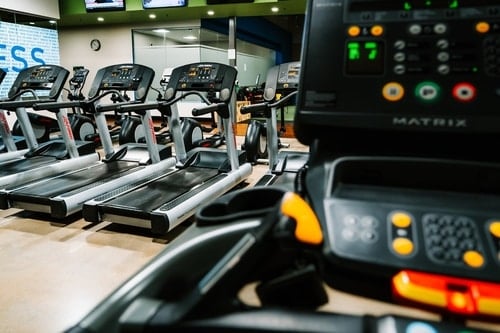
This module focuses on learning how to get the most out of the exercises you prescribe for your clients and gym members.
It will focus on teaching concepts such as progressive overload and recovery, and training for different goals such as hypertrophy (muscle building), strength, and endurance.
They’ll cover in detail the correct style of exercises to help reach these goals, the recommended sets, reps, and recovery times for each.
It’s vital as a gym instructor that you fully understand these concepts as they will form the base of your exercise prescription and recommendations.
How hard is this module?
There was no individual exam for this part of the course I took, but if you were to have one I imagine it would be a fairly simple quiz to find out if you have understood the training concepts and their benefits.
There are some technical aspects to this section of the course, but as you will be only taught the more common goals (weight loss, muscle building, endurance, and strength training), the material will never be too complicated.
You again will be given plenty of written information to study on recommended training styles and techniques to help people achieve certain goals and there may even be some 1-2-1 training days allocated to this too as it is such an important part of your course.
The Resistance and cardio training concepts exam
What you have learned during this part of the course will be reflected in your practical exam and the exercises, sets, and reps that you prescribe.
You may also be given examples of clients with particular goals in mind and asked to prescribe the types of exercises that you feel would help them the most. This would include both resistance training and cardiovascular recommendations.
Exercise instruction
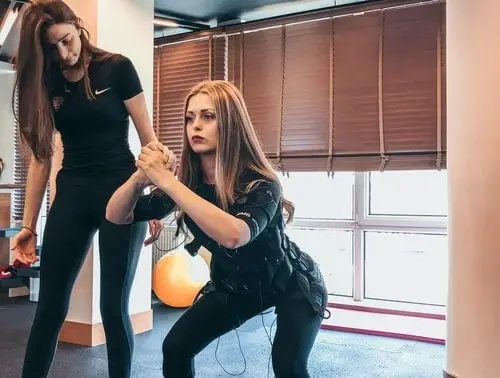
If you are really into your exercise (which you really should be if you are taking this course), then I think you will enjoy this course the most.
During the exercise instruction module, you will be taught how to use each piece of cardio and resistance equipment available in most gyms.
You will learn how to properly set each piece of kit so that it is correctly adjusted for each client you train and how to instruct the client to use the kit safely and effectively.
Pro tip: The brightly colored handles on machines make it easy to find adjustable parts of the machine
If you have already been going to gyms for years then you will probably know how to use a lot of the kit in most gyms, but for newbies, it’s really good to learn.
Even if you are experienced there is always something new to learn from this part of the course.
The instructors I had on my course taught us how to make the most effective workouts possible by using the equipment in the gym that would help the client reach their goals in the fastest way possible.
For example, we were taught that it is far more effective for members new to gyms to use equipment that worked larger muscle groups (compound exercises) like chest and leg press machines rather than smaller muscle groups (isolation exercises) like knee extensions.
You will also be taught how to give touch cues without being inappropriate and instructed on how to give stretching sessions, again, without being inappropriate. These are pretty important points to remember unless you want someone putting in a complaint about a “touchy-feely” trainer.
How hard is this module?
I didn’t find this module hard at all, and I would be surprised if you do.
The concepts you learn here are really pretty simple, and a lot of the equipment you will be using has different colored handles and levers to make them stand out so that you can easily adjust the kit for your clients.
Most of the equipment has drawings to show you what muscle groups they work, so it’s very rare that you would choose the incorrect piece of equipment unless you are super nervous and get mixed up, but even then, it’s very easy to get yourself back on track.
If you already enjoy your exercise, then learning about all the different pieces of kit you can use to train people will be really good fun. People generally tend to learn things faster if they enjoy them, so this module is something you can really look forward to.
Exercise instruction exam
The exam for this module will take place as part of your practical assessment which I will go through in detail a little later.
You will be assessed by ensuring that you have set up all the equipment correctly for your client and fully explained how to use it correctly.
The practical assessment will also take into account the program you design, so they will be looking at the sets and reps you prescribe which will also be taught as part of this course.
Pro tip: Designing a strength training program with ten sets of five exercises probably won’t be accepted for this exam. It might be seen as “cheating”.
They will also be assessing your ability to give cues and suggestions during the exercises to ensure the client will not cause themselves or anyone else injury and that they get the most out of the exercise being performed.
The only thing that can sometimes make this exam a little trickier is that it is a practical exam with an examiner watching and listening to everything you do.
For more nervous people, this added pressure can cause you to forget little bits here and there, but the examiners are usually pretty accommodating, so again this isn’t something to worry about too much.
How to pass the level 2 gym instructor exam
After having been examined on all the theory parts to your level 2 qualification, you will be asked to complete the practical examination.
This exam is the final piece of the course and after completing it, as long as you have met all the criteria the examiners are looking for, you will legally be allowed to work as a gym instructor and train people on a 1-2-1 basis in a gym.
There is nothing to fear when going into this examination as it is generally fairly laid back, however, the examiners will be paying attention to how you instruct your client (it is the whole point of the exam after all), so I will now list out each section of the exam and what your examiner will be looking out for.
Knowing these details before you walk into the gym that day will give you a massive confidence boost and really help you to easily pass this exam.
Examination layout
The exam will last for roughly an hour to an hour and a half (depending on how long the assessor’s feedback takes).
It will consist of the following sections:
Part 1. Examination overview (brief)

Your exam will start with a very brief (5-10 minute) explanation of exactly what the exam will cover and what they are expecting of you as a trainer.
This is the perfect time to ask any questions that you have about the exam to make sure you are completely confident that you know what needs to be done in the time allotted to you.
Each training provider is different, but mine used a gym that was open to the public whilst our exams were taking place, and there were roughly 20 or so of us students being examined at the same time.
This should put you at ease a little, as you can be sure that you won’t have an examiner standing over you every second of your session.
However, do not assume that just because you can’t see the examiner that they aren’t watching everything you are doing. From my personal experience, these guys are pretty great at hiding around corners and listening to your instruction whilst you think they aren’t listening.
They are watching you at all times!
Be completely professional throughout the entire session, and treat it as if this is your first session with a member of a gym that has just hired you. You need to make this session the highest quality that you can provide.
The exam brief that I was given took place in a conference room nearby to the gym floor itself and after we are all clear on what was expected of us and all questions had been answered, we were taken out onto the gym floor with our training partners.
Part 2. The meet and greet

The meet and greet section of the exam should be treated just the same as if you were meeting a member of the gym for the very first time to discuss the session you are about to take them through.
You may be wondering by now where your training partner will be coming from.
Well, they don’t just pick a random person off the piece of kit they were using and ask them to come and be trained for 45 minutes.
This might get some gym members a little grumpy
Instead, they will ask you to bring a friend or family member with you to be your trainee for the day.
This is great of course because if you know the person well already, it can put you at ease to be training them rather than a stranger.
There is, however, a small risk that you might feel silly pretending that one of your friends or family members is a complete stranger, but please don’t let this put you off. You need to clear your head and pretend that you have never met this person before if you want to pass this exam, it will really help.
During the meet and greet you will be expected to ask your trainee several questions, generally introduce yourself and explain what they can explain from that day’s session.
Important factors to the meet and greet
- Ask how your trainee is feeling that day, have they suffered from any injuries since the initial consultation?
- Quickly run through each of the exercises that you have planned for them that day and explain to them why you have chosen them. For example, if your client has said they are looking to build muscle, explain why you have chosen to perform 4 sets of 10 reps.
- You will need to explain important safety factors of the gym you are in, such as water points, toilet facilities and what to do if they start to feel faint, first aid and fire assembly points, etc.
- Let them know that if they need any help from you or have any questions during the session they can ask you at any point.
Part 3. Practical exam (session delivery)
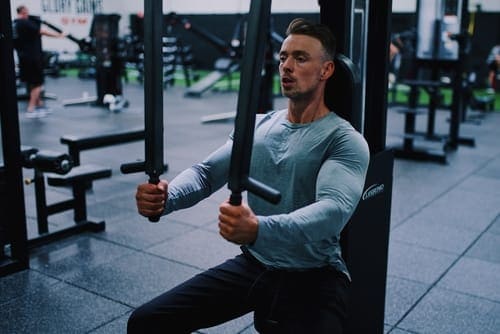
Ok, the main event, this is the point where all your previous training will help you to deliver an excellent session that will “wow” your trainee and your examiners.
All you need to remember here is to stay as calm as you can, treat your trainee professionally but also remember that you do know this person and they aren’t judging you at all.
The aim of this session is to teach your trainee how to train themselves, so you need to be clear that you are fully explaining every exercise, why they are doing it, and how to set up every piece of equipment so they can confidently do it themselves the next time they come to the gym.
The warmup
The aim of the warmup section is to make sure your client is fully ready for the main weight training section of the session.
It should last around 5-10 minutes and will usually take place on a piece of cardio equipment such as rowing machines, treadmills, x-trainers, or cycles.
Whichever piece of equipment you decide to choose, you will need to appropriately demonstrate how to use the equipment, including any important safety factors, how to set up the machine ready for use, how to use the programs, and understand the readings the machine displays.
Once you have explained how to use the kit and demonstrated its use, allow the trainee to start their warmup.
Whilst they are warming up, you can discuss more aspects of the session with them and see if they have any questions, but explain that they should also use the RPE scale (Rate of perceived exertion) to let you know when they have reached an appropriate level of exertion to begin the resistance section of the session.
Pro tip: Don’t exhaust your trainee in the warmup session, they will not thank you for it and it’s totally not the idea.
Remember that you also want your trainee to have a good time in this session, so whilst they are warming up, after you have discussed the important parts of the session, feel free to have a more relaxed conversation about the person themselves in order to learn a little more about each other.
This part of the conversation can help put both the trainer and trainee at ease and make the session far more comfortable for both people.
I actually think this is an often overlooked aspect of training, especially for gym instructors as rapport building is often touted as being more important for personal trainers, but it’s very important for gym instructors too.
When the warmup is complete, ensure that your client dismounts the equipment safely and feels ok before moving on to the main section of the session.
Dynamic stretching
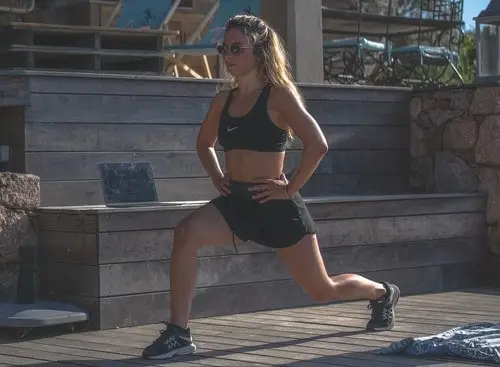
Some training providers will require you to add a dynamic stretching routine to your warmup section.
This should include exercises such as bodyweight squats, lunges with overhead reaches and twist variations, push-up variations, etc.
A few sets of 20 or so reps are often enough for most trainees as you don’t want to tire them out too much before you begin the main bulk of the workout.
You will want to demonstrate each dynamic stretch to the trainee several times and explain the benefits and which muscles are being stretched and warmed.
Whilst your trainee is performing the movements, ensure you take a close look at them and don’t forget to move around to get better angles.
You are looking out for issues such as poor posture or alignment issues that should be politely corrected. Feel free to use touch cues if they are warranted and help demonstrate the proper execution.
Resistance training section

Once your trainee is fully warmed up you need to begin your resistance training section. You should ensure that you get cracking with this fairly quickly as you don’t want to have your trainee start to cool down too much before lifting weights or you will lose the benefit of the warmup.
Resistance training can be potentially dangerous and injury can occur, which is why your main focus here as a trainer should be on safety.
Ensure that when you are demonstrating each exercise you clearly explain why you are prescribing it, what muscles are being worked, and how to perform the movement in a controlled, safe and effective manner.
You should demonstrate each exercise, pointing out any safety factors. Make sure your client can clearly see everything you are doing, and ask them several times if they understand and are happy with the movement before allowing them to start it on their own.
Something to remember
An important factor to consider is that gyms are very busy and very loud places with lots of noise and distractions. You need to counter this by keeping your trainees attention at all times and speaking loudly and clearly enough so they can hear and understand your instruction over the distractions around them.
Whilst your trainee is performing their movement, do not stand in one position. You will not be able to clearly identify any errors your trainee might be making from one position, and this is something your assessor will be looking out for.
Instead, move around every few seconds to make sure you have a 365-degree view of your trainee at all times. This gives you the best opportunity to spot any issues and correct them immediately, which is your role as a trainer.
How much weight should you use?
In regards to how much weight should be used during an exercise, you should always start with a weight that is fairly light for the trainee.
Explain that this is not what the trainee would be using in their “working sets” during their own training sessions, but it is being used to ensure that the exercise is being performed in the correct form.
As soon as the trainee is confident with the movement, you can then increase the weight to a point that they feel they are struggling to complete the set comfortably.
Rest periods
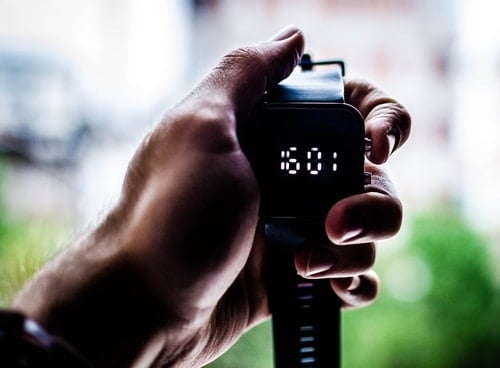
Use your training to determine how long your trainee’s rest periods should last. It’s unlikely that your trainee will be asking for strength training during your exam, so there should be no need for excessively long rest between sets.
During these breaks, make sure you ask your trainee how they are feeling about the exercise if they feel comfortable during its execution and if they agree with the weight that is currently being used, or if they could lift more.
Should you use touch cues?
Touch cues are very important during weight training exercises, as simply explaining how someone should use or move their bodies isn’t interpreted as clearly by some people as by others. In some examples, it is easier and more effective to actually move and put the trainees into the positions they need to be in.
It goes without saying that whenever you use touch cues, you must make sure you are using the back of the hands and staying away from any areas of the body that could make people feel uncomfortable in any way.
Before you even consider using a touch cue, tell your client that you are going to demonstrate with your hands where they should be and how to perform the movement, then ask them if they are ok with this.
Some religions prohibit this kind of contact and others may just not feel comfortable with it generally, so please be respectful of this.
You will have written out an exercise program with five or six exercises, with sets of three or more, but you will not be completing this whole workout. Instead, you will only be asked to complete two or so sets of each exercise to allow enough time for feedback at the end of the session.
The post-workout cooldown
After an intense weight training session, you will need to cool your client down and stretch them to remove the chances of injury.
A cooldown should last anywhere between 5-10 minutes and should again include clear instructions if you are using a different piece of equipment from your warm-up.
You can use this time to reflect with your trainee on how they feel the session went, answer any questions they have about training on their own, or address any other issues or questions they may have.
Once they have completed a slow cooldown, ensure they dismount carefully and walk them over to the stretching area.
Stretching your trainee
During your training, you will have been taught how to give a full stretching session after a workout has been completed.
Take each movement slowly, and again explain what you are going to be doing and why, and also tell the trainee to let you know if there is any discomfort during the stretch so that they can stop immediately.
Many people skip stretching as they don’t see the importance of it, so do emphasize the importance of why they should stretch after each workout and the benefits of doing so, which could include lessening post-exercise soreness.
Make sure that they understand that each stretch should be completed slowly and should last for at least 30 seconds with deep and controlled breathing used throughout.
Part 4. Feedback
Once your session is complete and your trainee has been allowed to shower and get changed, you will be taken as a group back to the conference room where your assessor will give you feedback on your training session.
It is likely that your assessor will need some time to go over their notes before giving you your feedback, so they may allow you to go for a coffee or sit and talk amongst the rest of your class about how things went.
Within fifteen to twenty minutes, your assessor should be ready to give the class all their results and feedback for each trainer’s session.
When will you find out if you’ve passed?
In most cases, you will know the outcome of your exam on the same day you take it, and in the worst-case scenario, should you fail, you can resit your exam on the next date your training provider has available.
Whether you pass or fail the exam, do not worry, the feedback your examiner will provide you with is very valuable and you can use it to either make passing much easier the next time you take the exam or to improve your training once you start as an employed gym instructor.
I am sure with the information I have provided in this article you should not need to worry about that happening though.
Conclusion
Wow, ok, that was a long article and a little more formal than I usually write, but considering the topic we are discussing in it, I wanted to be as accurate as possible.
This should work as a step-by-step guide on how to pass your exam and I really hope I have managed to answer a lot of the questions you may have had.
Long and short of the whole article, it is really not that difficult at all to pass your level 2 gym instructor exam. You can get a pass as long as you study the information you are given in enough detail and remain calm and professional at all times throughout the session.
I have a lot of confidence in you, and I really hope you get your qualifications asap and get out there on the gym floor training people.
Go get ’em!
If you enjoyed this article and feel it might help others, please feel free to share it or link back to it.

